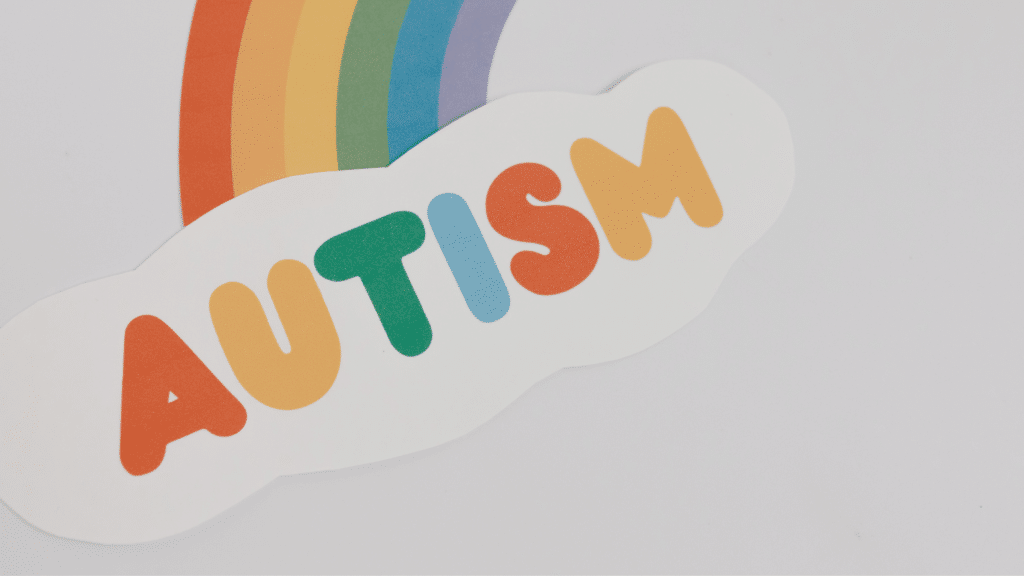
Mending the Rainbow Bridge through Song
The Camphill School, located in southeastern Pennsylvania, is a full member of the Association for Waldorf Schools in North America but practices Curative Education, a Waldorf pedagogy for children with profound learning differences and developmental challenges. The following is an account of how Becky worked with a non-verbal adolescent on the Autism spectrum:
 “In the middle of his rage, he would thump on his sternum in rhythm to some compelling inner music, humming and grunting out a melody-glaring at me, daring me to try and stop him.
“In the middle of his rage, he would thump on his sternum in rhythm to some compelling inner music, humming and grunting out a melody-glaring at me, daring me to try and stop him.
Over the years, S. had grown from a little one entranced by odd things: the full moon, red boots, umbrellas, into a tall and handsome adolescent. When he was a child, sightings of these talismans would entice him to jump in place before them, flapping his hands in a kind of homage to their deep significance, known only to him. And always, always, a song accompanied his gestures. No spoken word was ever formed. His singing served as a bridge to the world around him and as a way to form and contain the world within. But this was no straightforward bridge, and the path was full of inexplicable twists and turns. The fairy tale image of a newborn traveling down the rainbow to begin life is not a smooth passage for many children on the Autism Spectrum. For S., the bridge was broken into fragments, every direction was full of obstacles.
 Some approaches to this kind of profound autism can be direct, even confrontational with an intense, no-nonsense kind of focus. Compliance with some of the common practices, for example, the ubiquitous command of “look at me,” can be a painful ordeal for the child. Such demands only exasperated S. I often felt he was offended, even insulted by this kind of rudeness and the disregard of his interests, his intentions. But the gentle guiding of S.’s intentions to be more in tune with his surroundings was our daily task.
Some approaches to this kind of profound autism can be direct, even confrontational with an intense, no-nonsense kind of focus. Compliance with some of the common practices, for example, the ubiquitous command of “look at me,” can be a painful ordeal for the child. Such demands only exasperated S. I often felt he was offended, even insulted by this kind of rudeness and the disregard of his interests, his intentions. But the gentle guiding of S.’s intentions to be more in tune with his surroundings was our daily task.
The work of the Curative Educator is to grow with the child. Dedication to inner transformation based on self-reflection is the most important tool, sometimes the only one. Each student calls forth a unique response. One same approach, one same technique can never be the key to all children. The relationship and the rules of the game, so to speak, are always changing. What meets the needs of one may be ineffectual with another.
 What worked for S. was for us to join his song. The day naturally unfolded through music in the lower grades of our Waldorf School. S. found this very satisfying. When spoken language, facial expression or gesture did not offer sufficient cues to bring meaning to the given circumstances, singing almost always did. In response, his quiet humming could serve as a confirmation of the task at hand or a request (seconds of a snack demanded by repetitions of the blessing song), or as a tenuous, shy social overture. S. would smile when his classmates deciphered his humming and joyfully joined in-a kind of curative “name that tune.” This continued through middle and high school.
What worked for S. was for us to join his song. The day naturally unfolded through music in the lower grades of our Waldorf School. S. found this very satisfying. When spoken language, facial expression or gesture did not offer sufficient cues to bring meaning to the given circumstances, singing almost always did. In response, his quiet humming could serve as a confirmation of the task at hand or a request (seconds of a snack demanded by repetitions of the blessing song), or as a tenuous, shy social overture. S. would smile when his classmates deciphered his humming and joyfully joined in-a kind of curative “name that tune.” This continued through middle and high school.
Many therapies aided in S.’s healing. The story telling format of the Waldorf curriculum throughout the grades brought the world to S. in palatable pieces. At times, he could find his place within the circle of peers. Other times, his fury at his inability to make sense of his experiences isolated him. The sense world, with its millions of impressions, overwhelmed him. His quiet humming could escalate into shrieks of frustration. He frightened people.
 Adolescence, a major challenge for neurotypical children, can be devastating for the young student who lacks ability to understand and process the physical and emotional changes. The charming music filled days of Lower School were past. What could we offer S., now?” There was only truth-not spoken but sung. Quietly, I sing in a noncommittal voice “Do you feel angry because horseback riding was canceled?” A little nod in assent. Relief. A deep breath. The internal reality met by external reflection.
Adolescence, a major challenge for neurotypical children, can be devastating for the young student who lacks ability to understand and process the physical and emotional changes. The charming music filled days of Lower School were past. What could we offer S., now?” There was only truth-not spoken but sung. Quietly, I sing in a noncommittal voice “Do you feel angry because horseback riding was canceled?” A little nod in assent. Relief. A deep breath. The internal reality met by external reflection.
It didn’t always work. I didn’t always guess correctly. Sometimes, the only thing available to S. was to rage to the point of exhaustion. But the moments when this didn’t happen, where there was a glimmer of really meeting each other, these moments were always set in motion through song.
 Twelfth grade musical, The Camphill School: Everyone is on stage and in costume. S. is onstage in his cowboy hat and boots with painted sideburns down each cheek. It is the grand finale! It is loud! It is stressful! What was I thinking?!? S. tucks his hand under my arm and leans into me, seeking eye contact. This is his usual approach when he is going to request something which can’t be delivered at the moment… oh, dear … But then, softly S. begins to hum. I lean closer in order to hear him over the robust singing of other students. Does he need the restroom? Is he hungry? No, his tune is unmistakably the opening bars of “Oklahoma.” The rest of the class is belting it out. And S. is humming along. He’s humming right along with the others.
Twelfth grade musical, The Camphill School: Everyone is on stage and in costume. S. is onstage in his cowboy hat and boots with painted sideburns down each cheek. It is the grand finale! It is loud! It is stressful! What was I thinking?!? S. tucks his hand under my arm and leans into me, seeking eye contact. This is his usual approach when he is going to request something which can’t be delivered at the moment… oh, dear … But then, softly S. begins to hum. I lean closer in order to hear him over the robust singing of other students. Does he need the restroom? Is he hungry? No, his tune is unmistakably the opening bars of “Oklahoma.” The rest of the class is belting it out. And S. is humming along. He’s humming right along with the others.
The rainbow bridge is shining.
 (originally published in the Spring 2011 newsletter for The Association for Healing Education)
(originally published in the Spring 2011 newsletter for The Association for Healing Education)





Responses